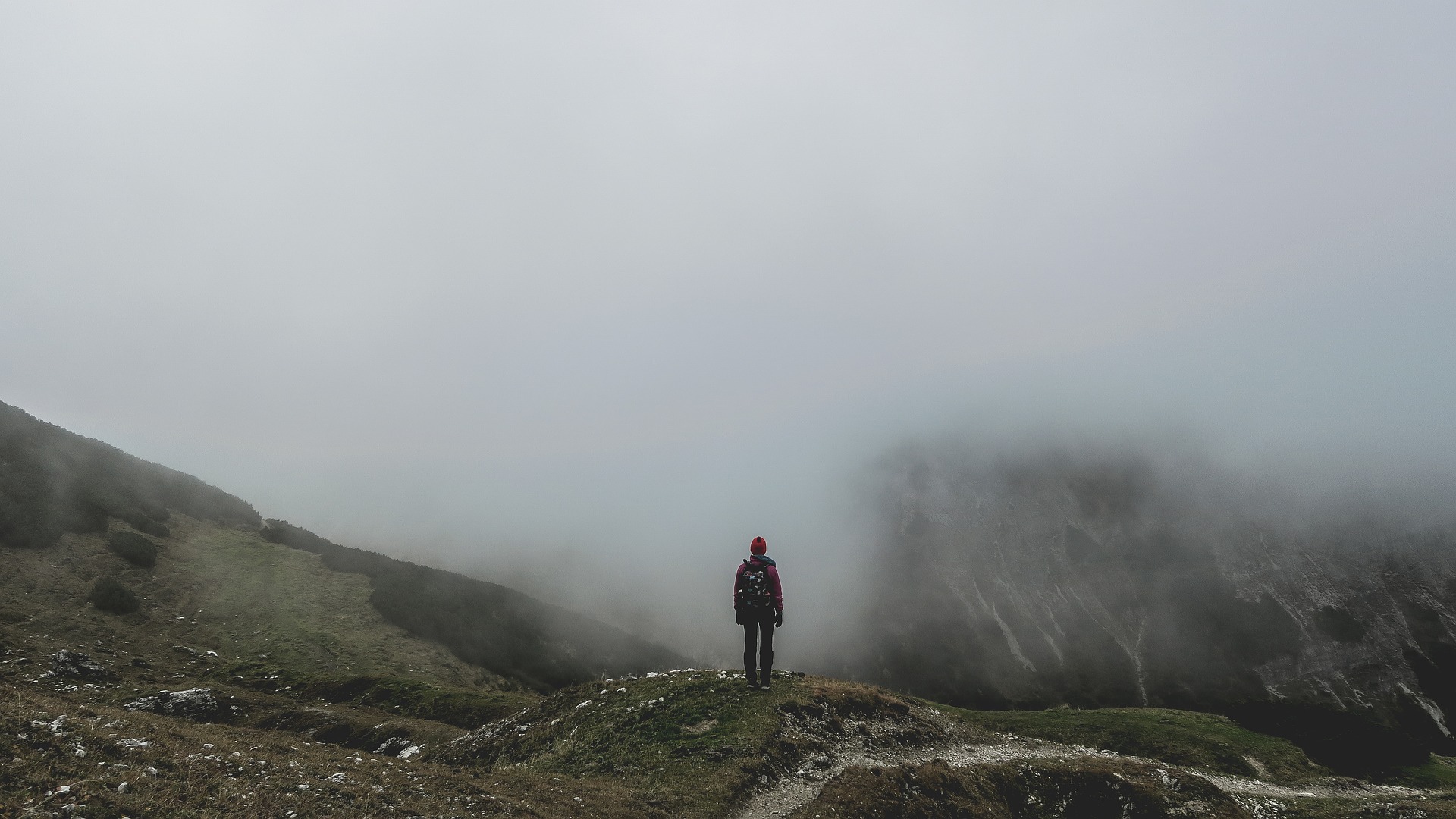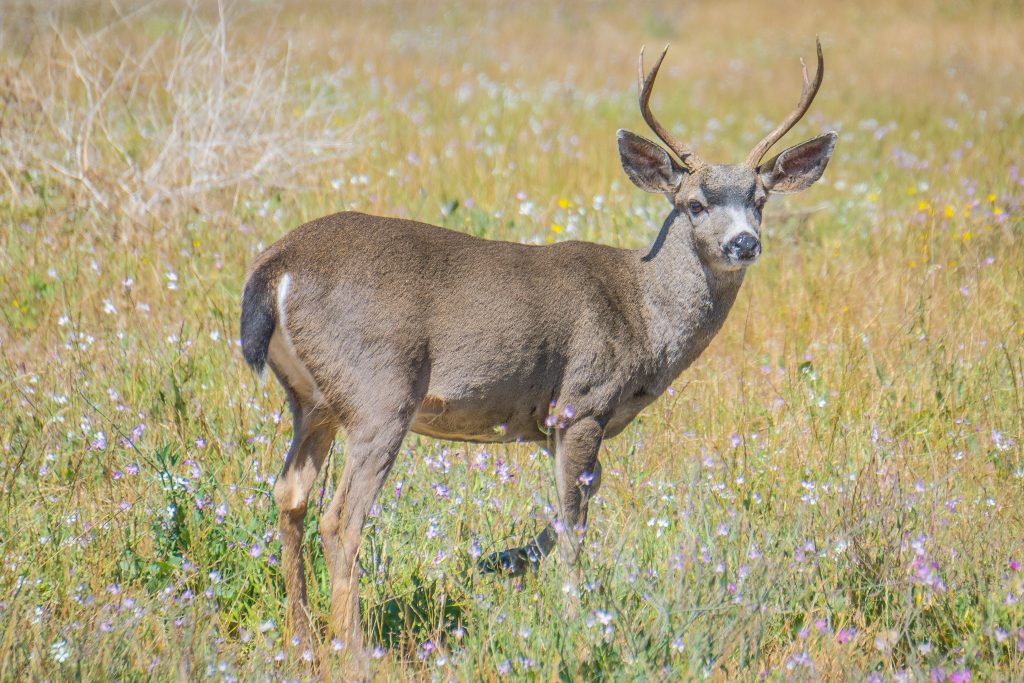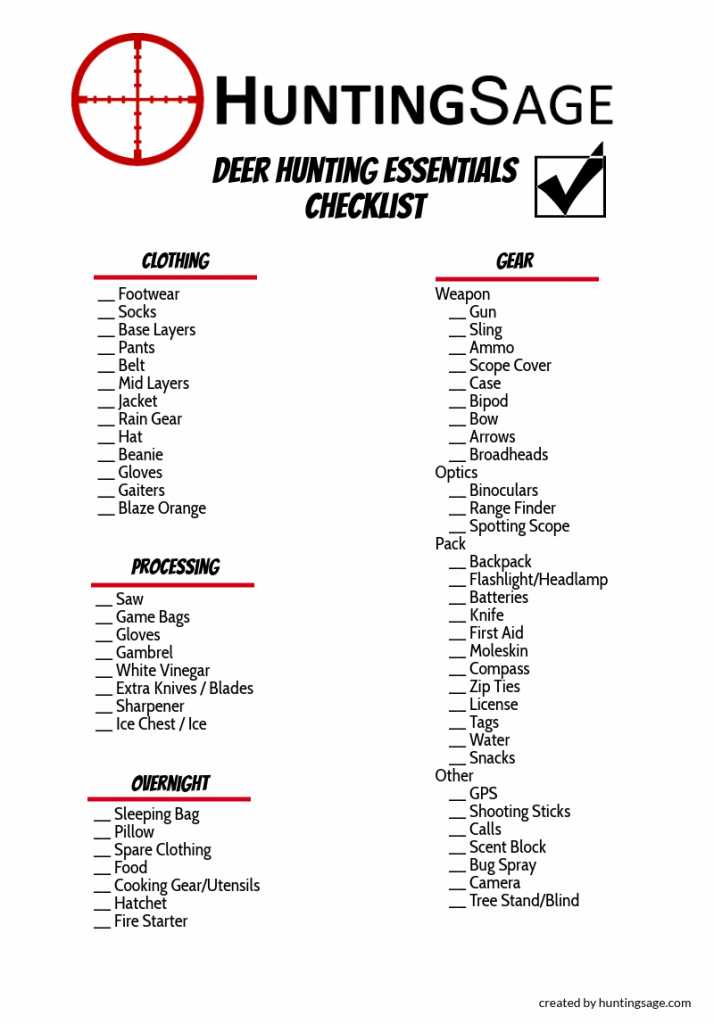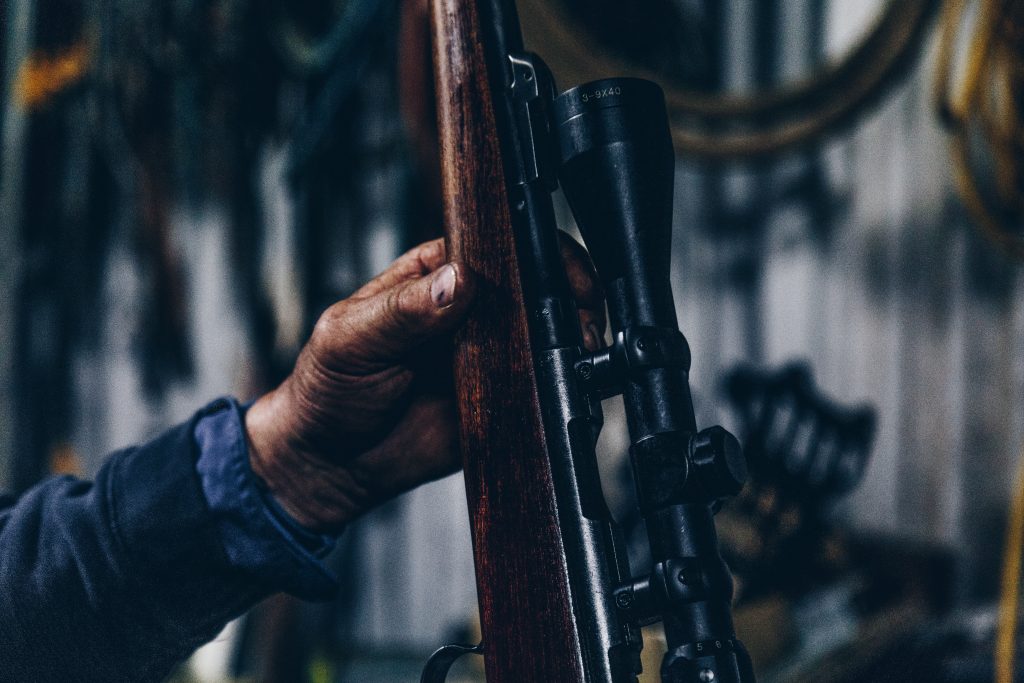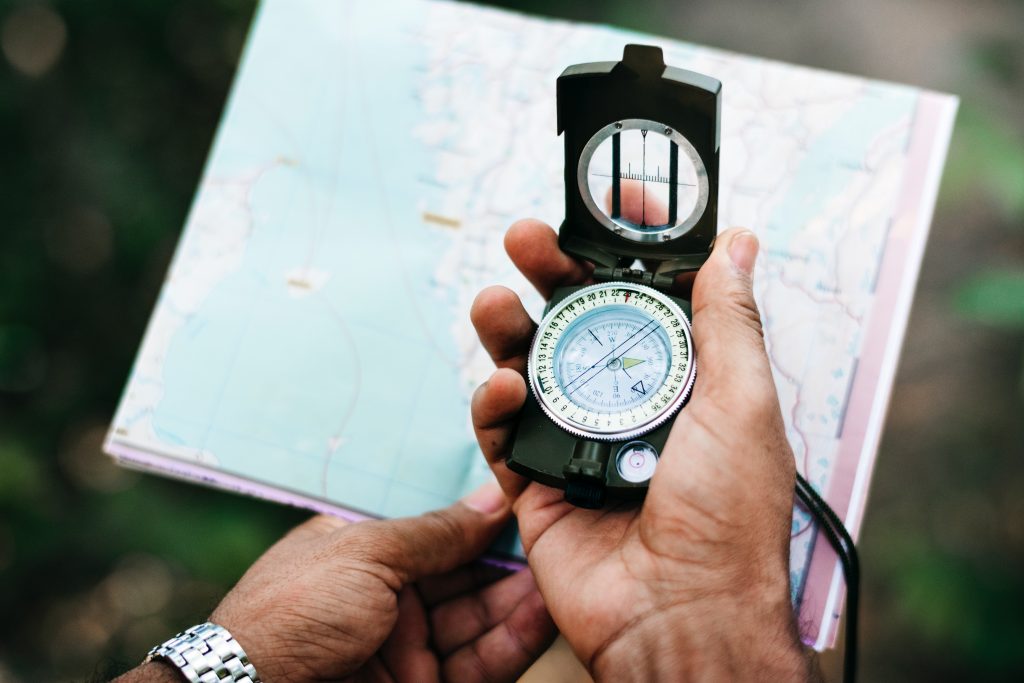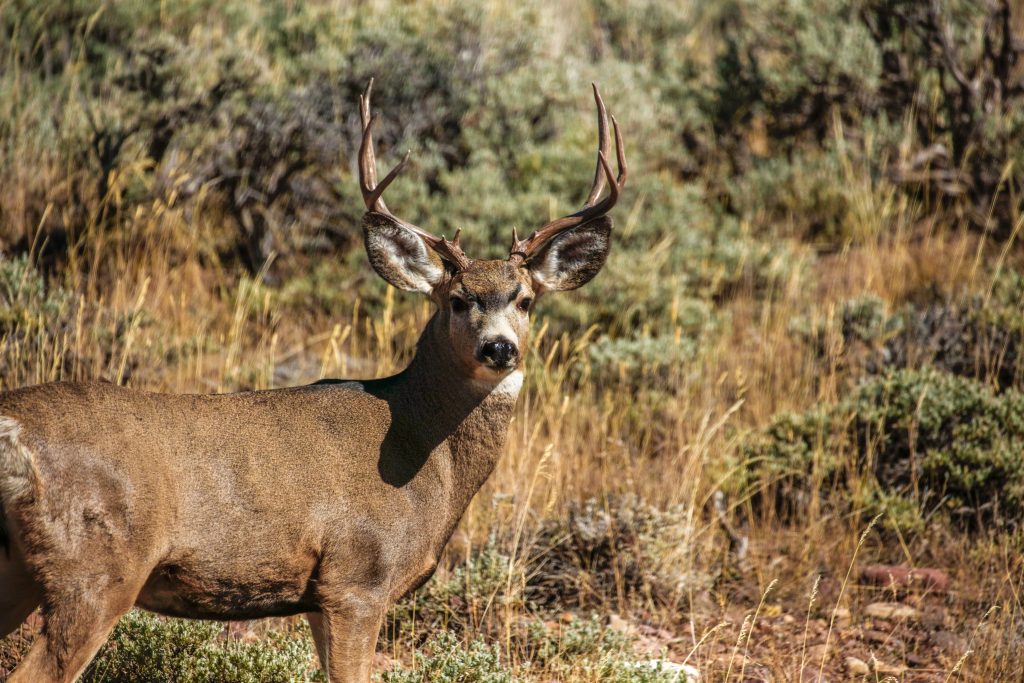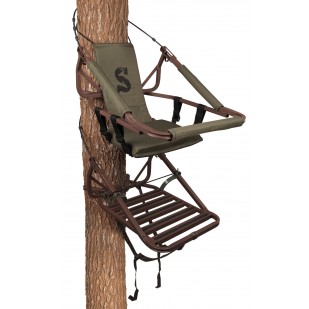Getting into Hunting
So you want to start hunting deer? Well it’s your lucky day because we have written an in depth guide that will take you from a complete beginner to ready for your first deer hunt.
But before you embark on this endeavor, stop and ask yourself, why do you want to start hunting?
Hunting is a challenging sport requiring many different skills. This is not something you can learn in a weekend, it is going to require many hours or patience and persistence.
Be prepared to practice marksmanship, learn basic survival, navigation skills, and many hunting techniques in the never ending pursuit of improvement.
If you are looking for a source of organic, natural fed meat look no further. Eating meat that you personally harvested from start to finish is deeply satisfying and something our ancestors have done for a very long time. Deer meat has less fat than beef and more of many essential nutrients per serving. Unless the deer you are hunting are feeding on GMO crops, the meat is organic as it gets.
Now before you run off into the woods on your first deer hunt there are a few more things we still need to go over. Grab a cup of coffee and something to take notes. Let’s get started.
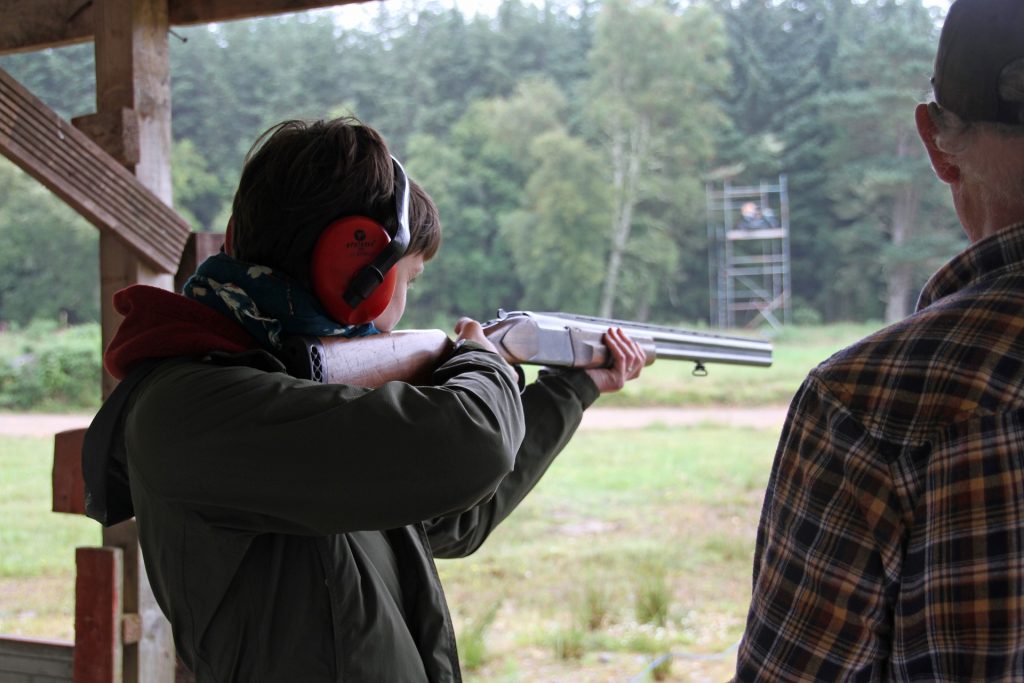
How to Get into Hunting
The two most important skills for someone new to hunting to learn are firearm safety and hunter safety. Knowing how to safely operate a firearm is the foundation for everything else you need to learn to hunt.
Firearms Training
Growing up without guns might seem like a big hurdle but there are many great firearms training courses available. If you have limited experience using a firearm, find a training course with a certified instructor. The NRA offers courses on a number of weapon types. Here is a link to their rifle training.
Practice
Sometimes you will spend weeks and weeks hunting before seeing a good legal buck. If you only spend a few weekends hunting a year you might only see this buck once every couple years. This is why it is critical that you have put in plenty of practice with your weapon before hand. You don’t want to miss your first deer when the time finally comes.
Also worth mentioning at this point; if you manage to find a hunting buddy or mentor and you do anything unsafe with a firearm good luck getting them to continue hunting with you. Before worrying about how to be a better hunter, it is vital that you become competent with a firearm.
Hunter Safety
Once you have some firearm training under your belt go ahead and sign up for a hunter safety course. Not only is this required to buy a hunting license, it will teach you deer hunting etiquette and help further ingrain safe habits relevant to hunting.
After you have complete your hunter safety course you are ready to purchase your license. You will also likely need to purchase a tag for any big game you plan to hunt. Make sure to read the section below on finding places to hunt before you purchase a tag.
Land Conservation
Something worth mentioning is the importance of good etiquette as it relates to land conservation. Many groups are constantly trying to take away the land reserved for outdoorsmen. Do not give them any ammo towards their efforts. Pick up your trash, do not recklessly destroy roadways, and leave the woods how they were when you started. If you pack it in, pack it out.
What do you want to hunt?
The tactics discussed in this article focus on hunting deer but many topics apply to hunting any species of game. While it may be tempting to jump straight to hunting big game, there are some advantages to hunting smaller game worth considering. They include:
- More places/opportunities to hunt
- Success much more likely especially for beginners
- Requires less gear and money to get started
- Allows you to develop skills which will carry over to hunting larger game
Finding Hunting Buddies
Finding a hunting mentor will speed up your learning curve more than anything else. There is no substitute for someone with experience to help you avoid common mistakes. The best place to start is to ask a friend or relative that hunts for some help. More than likely they will be willing to offer advice.
If you do not have any friends or relatives that hunt, try calling around to see if there are any local hunting groups or clubs you can join. Check Facebook for hunting groups near you as well.
Deer Hunting Essentials Checklist
Essential Hunting Gear
Footwear
Footwear is one of the most important pieces of gear you will buy if you plan on spending any amount of time hiking. Going hunting for the first time and coming home with nothing but blisters is an outcome we recommend you avoid. The important thing here is to find a pair of boots that fits YOUR foot. Spend some time at the store trying various brands and sizes until you find what fits best. You want something durable that is not going to breakdown quickly, waterproof is good, tread for good traction is great. If you want a more detailed review of some of our favorite boots checkout our article Best Mountain Hunting Boots.
As far as socks go we recommend you stick with high quality merino wool. At first glance it might seem like good marketing but merino wool lives up to the hype in our experience.
Merino wool breathes well and will help keep your feet dry even if they sweat a lot. If your socks do happen to get wet, merino wool does a good job of keeping you warm. Bacterial also have a difficult time surviving in the wool so you can wear the socks longer before they start to smell. With that said, always bring an extra pair of socks. Changing your socks frequently will keep your feet fresh and healthy. The socks may also come in handy if you need a rag in a pinch.
Base Layers
A key concept when dressing for hunting is to layer properly. The best base layers for hunting should be made of either wool or polyester. The beauty of layering is that it allows you to adapt the middle layers of your outfit to the weather conditions. For innermost layers of garments we prefer merino wool. The benefits here are similar to those mentioned for socks above. You can wear the same set of clothing for a few days without starting to smell. The material breathes well and doesn’t become saturated with your sweat. Some people swear by Under Armor so try out multiple material types.
Mid Layers
If you are hunting early season on the west coast you often won’t need any mid layers at all. Fleece or wool work well for colder climates because they provide warmth but are not too bulky. In cold climates use a down jacket to stay warm.
Outer shell
The purpose of your outer shell is protection from wind, rain, and snow snow. Ideally this layer breathes well. If you are hunting in a wet climate get something waterproof. The goal here isn’t to provide a ton of warmth, just to protect the layers underneath from the elements.
Hunting Gear
These include gloves, hat, beanie, gaiters, balaclava. They will vary depending on your hunting conditions but before you go out and buy one of everything think about what you are looking to accomplish with that item. It doesn’t make sense to buy a beanie or balaclava if you will be hunting late summer (July-Aug) when it can still be 90 degrees +.
Weapon
Select something appropriate for as many types of hunting that interest you. When selecting a caliber for your first rifle stick to something common and popular like .308, .270, .30-06, or .243. A deer caliber without a lot of recoil is a good choice. Buy yourself a comfortable sling, you will be happy you did.
Stick with the same ammo that you use to sight in your gun. A case to protect your firearm while traveling is another item you will want to purchase.
How to clean your weapon
Learn to keep you weapon clean and in good shape. Never leave your gun in a case for more than a few days at most. Keep very lightly oiled rag handy to wipe it down after any you use it. We recommend you clean it anytime you fire more than 5-10 rounds, and once at the end of your season to prepare it for storage. See the video for a detailed breakdown but the basic process is:
- Make sure the gun is not loaded.
- Remove and clean the bolt using solvent, then wipe clean.
- Clean bore as per manufacturer’s instructions, be careful to only use solvents recommended by the gun manufacturer.
- Run patches through barrel until the patches come out clean.
- Finish by running oiled patch through barrel.
- Wipe down exterior of action and barrel with light coat of oil.
Optics
Optics are similar to boots, they are worth spending a little more for. The price you pay is directly correlated to the quality of the glass used in the construction of a lens. Your first purchase in this category should be a scope for your rifle. Magnification of 3-9x with a 40mm objective (diameter of the large end) is a very common and versatile configuration. Make sure you purchase scope mounts that fit both your rifle and the tube diameter of your scope. The tube diameter of scopes is typically either 1” or 30mm. 30mm scope mounts WILL NOT work on a scope with a tube diameter of 1” so be sure to ask someone knowledgeable if you have questions.
Start with buying a scope, then binoculars when you can afford them. After that you can consider a range finder to help you better estimate your shooting distance. Last in terms of necessity would be a spotting scope which you will not need unless you are hunting large open areas.
Day Pack/Backpack
Like everything else discussed above this will depend on hunt but regardless you will need some sort of pack to carry your gear. Our recommendation is that you get a small daypack for your day hunts and if you decide to go on longer overnight trips have a separate backpack that carries whatever additional gear the overnight trip demands. You don’t want to make your daypack any heavier than it needs to be. Take our word on this one. Some manufactures to look at are: badlands, kaifaru, and alps. A list of good items to carry in your daypack includes:
- Snacks
- Knife
- Water
- License/Tags
- Flashlight
- Paracord
- Moleskin
- Small first aid kit
- Lighter
Deer Hunting Strategies and Techniques
Where to Hunt
Step one when planning your first hunt is to figure out where you are going to hunt. Start by visiting your state’s fish and game website. There should be an area outlining where, which species, and the time of year you can hunt. If you are going to hunt on private land make sure you have permission. There is no better way to ruin your hunt than getting caught on someone else’s land and handed a fine or worse.
Once you have a few ideas where you would like to hunt, take a look at them on Google Maps. Checkout the routes to and from the areas that interest you. Will a 4×4 vehicle be able to make it where you want to go or will you need an ATV? Are ATVs allowed in the area? Will you have to walk? How far?
To increase you chances of locating deer you want to concentrate areas near food, water, and cover. Look for streams or springs. Figure out what the deer in the area typically feed on and look for areas containing that vegetation.
Another factor to consider when choosing your location is the number of other hunters in the area. If the area is easily accessible and well know you may have better luck looking elsewhere.
You should now have narrowed it down to a few locations. The next step is to spend some time scouting the location before the season if possible. The closer to the season you scout the better.
Look for signs of deer tracks, scat, or deer themselves. Take notes on where you see the most activity. These are the first areas you want to focus on when hunting season rolls around.
3 Keys to All Hunting Techniques
Now that you have figured out where you are going to hunt, it is time to figure out the deer hunting strategies and tactics you are going to use. There are 3 key factors that all the techniques discussed below depend on:
- Scent Control
- Sound Control
- Camouflage
These 3 factors are going to make or break your success as a hunter. The basic idea of hunting is to get within range of your weapon to the animal of choice and make the kill. The most common ways hunters fail are spooking the animal via their scent, sound, or movement.
Basic scent control tips
Wind
Deer have an excellent sense of smell.
The direction of the wind should always be in the back of your mind. Do your best to stay downwind of the deer you are pursuing. Deer have a very good sense of smell which they rely on for survival. If you find the wind at your back when in pursuit of a buck chances are high that your scent will tip him off.
Do not use any scented soaps, shampoos, sunscreen etc. Avoid heavily scented bug spray. The goal is to minimize anything that smells unnatural to deer. If you are going to use sunscreen or bug spray use brands designed to limit scent.
Sound control tips
Deer have good hearing so you need to do your best not to alert them of your presence by making too much noise. Make sure all electronic devices are set to silent. Be conscious of where you step when you walk. Do your best to avoid dry leaves and sticks, try to walk on moist dirt and grass whenever possible. If you need to get close to an animal take off your shoes and finish the stalk in your socks.
Visual tips
Wear camouflage that blends in with the habit you are hunting in. Even basic brown, tan, and green clothing will work fine. When on the move while hunting think about the pace at which the other animals are typically moving. Most animals are moving quite slow. You want to mimic this pace. Never make sudden quick movements.
Spot and Stalk Hunting
Spot and stalk hunting can be a very exciting way to hunt. The basic idea is you as the hunter use your binoculars and/or spotting scope to survey large open areas. Once you see an animal you want to pursue, plan and make your way to a location within range and prepare to take a shot. It is not uncommon to start this journey a mile or more away from the animal.
In general you want to start in an area where you can see as much as possible. Position yourself in a way where your outline does not stick out like a sore thumb. You also want to consider whether you will actually be able to pursue the animal after you see it.
The beauty of this technique is that it allows you to cover a lot of area which increases your odds especially if you do not know the area well. The real key in having success with this method is in the stalk. You must be careful in planning your path so you do not spook the animal with your movement, sound, or smell.
Still Hunting
Still hunting is exactly what it sounds like. You setup in a location where you think deer will pass by and you wait until they do. This technique is better for areas with more cover and vegetation because you can’t see like spot and stalk. Still hunting is a good technique for those new to hunting because it forces them to sit still and be patient. By sitting still you lower your chances of game seeing or hearing you
The real key to still hunting is location. You will have more success if you have adequately scouted the area and have a good understanding of deer migration patterns. Setup along a funneled path the deer take to travel between a feeding and bedding area. Try not to disturb the bedding area, if a deer suspects anything is off about where they rest they will abandon the location and find a new spot to bed down.
Treestand Hunting
Hunting from a tree stand is a very popular method among deer hunters. This is exactly what it sounds like. You buy a tree stand like pictured above from Summit Treestands and anchor it in a tree.
This strategy can be a very effective way to hunt deer. The major benefit is it allows you as the hunter to sit in an elevated position relative to the animals field of view. If you do a good job of managing scent and sound you chances of getting very close to deer are great. Be care that you do not setup your stand upwind of the area the deer will be traveling. If this happens to be the case come time for your hunt, abandon that spot for now and try another.
If you decide to try this route make sure you know how to properly setup your stand. Many people have been seriously injured or even killed when they fell out of a tree stand that was not properly anchored. Find a tree to practice on before the season so you won’t have any issues come time for your hunt.
Ground Hunting from a Blind
Similar to hunting from a tree stand but instead you setup a camouflaged blind on the ground. Since you are now located down at the vision level of the deer the blind needs to be well disguised in order to have any luck.
Still Hunting Without a Blind
Here you want to setup in a location that is a little further off the path taken by the deer but in a spot that still offers a good opportunity to take a shot when a deer passes by. This is the easiest hunting technique to get started with because it doesn’t require any extra gear.
Cleaning, Field Dressing, and Butchering
Gutting
Gutting your first deer can be very intimidating but luckily there are so many resources available on the internet that walk you through the process. You will find many opinions on how to gut a deer. Try to learn something from everyone’s approach.
Gutting isn’t something easily conveyed with text so checkout this very good demonstration by Steve Rinella. Using a saw to open the pelvis and sternum will make the two most difficult parts of gutting easier. When the sternum is not split, it is common for hunters to cut themselves while trying to reach up into the chest cavity to cut the windpipe. Also note the two finger technique he uses to cut through the hide near the stomach.
Skinning
The technique in the video below is not the traditional way of skinning a deer but we have found it is a great way to avoid getting hair on the meat. You really want to do your best to avoid getting hair on the meat because you risk contamination. The video also does a great job showing how to quarter the deer as well as cut out the backstraps.
Hanging
Hanging deer to age the meat is a great way to improve the flavor profile of the meat. Many old timers age the meat for days to a week while others don’t age the meat at all. We have found hanging for a few days does improve the taste of the meat. If you are going to hang meat make sure to gut and skin the animal quickly and keep the meat in a cool location while it hangs.
Butchering
Butchering is far to much of a process for us to cover in this post. When first starting out you will either want to take your deer to a local butcher or have a buddy who has experience butchering a deer guide you through the process. If you are planning to go the butcher route, call around prior to your hunting trip and have this figured out ahead of time.
If you are looking for a step by step guide, the book Buck Buck Moose by Hank Shaw is an amazing resource for butchering and cooking deer. We are big proponents of using as much of the deer as possible. Render the fat, make bone broth, eat organs, try it all!
All this might seem like a lot, and it will be a struggle your first time. Don’t give up, this is part of the process and how you learn. Every experienced hunter has gone through it.
If mounts are something that interest you, checkout my post on how to bleach a skull for step by step instructions.
What To Avoid
- Don’t go out and spend a fortune of all the latest and greatest gear. Hand me downs and thrift stores are great when starting out. After a few trips you will be able to recognize the areas where your money will provide the most bang for its buck.
- Don’t act like a know-it-all, show respect to more experienced hunters.
- Don’t take any one source of information as gospel. Keep an open mind, consume as much information as you can get your hands on, and watch your hunting IQ improve over time.
- Don’t get discouraged. Hunting big game is a challenging endeavor that requires patience. Successful, experienced hunters have spend a lot of time (often since childhood) building their skill set. If you want to know how to be a better hunter you need to be persevere when you don’t get your first buck on your first trip.
- Don’t forget your safety training.
- Don’t practice bad hunting ethics. Hunters are having to do everything they can to sustain their rights. Don’t contribute ammo to the groups opposing hunters.
Resources
State Fish and Game Websites:
- Alaska
- Arizona
- California
- Colorado
- Florida
- Georgia
- Idaho
- Illinois
- Indiana
- Iowa
- Kentucky
- Maryland
- Michigan
- Minnesota
- Mississippi
- Missouri
- Montana
- Nevada
- North Carolina
- North Dakota
- Ohio
- Oregon
- South Carolina
- South Dakota
- Texas
- Utah
- Washington
- Wisconsin
- Wyoming
Forums
Books
Our Favorite Deer Hunting Books
FAQ
What is the best resource for finding places to hunt?
Your state fish and game website is the best place to start. You should be able to find places to hunt near you depending on your location. Once you have a general location in mind, explore the area using Google Maps.
What gun is best to start?
This depends on what type of game you are hunting and where you live. A great choice is a Remington 870. You an use it to hunt deer with slugs as well as fowl with pellets. For rifle recommendations check out our article highlighting the best beginner hunting rifles.
What other essential gear do I need?
We covered everything you need above. Checkout our hunting checklist.
Can I practice shooting at an indoor range?
Any practice is great especially when starting out and getting comfortable around firearms. An outdoor range between 100-200 yards is perfect as these are the distances you will be shooting almost always.
How much should i expect to spend for reg/license/tags?
For an in-state deer hunting license and tag expect to spend between $80-$100 in most states. Out of state prices vary greatly from state to state with some costing closer to $500-$1000.
What about gear/guns?
If you follow the recommendations in our other articles you can have a quality set of hunting gear for less than $1500.
Where should I buy gear?
All depends on your budget. If you are looking to buy good quality gear on a budget, checkout our article on discount hunting sites.(link) You should be able to get everything you need from the sources in that article. If you are n
